#biocomputing
Explore tagged Tumblr posts
Text
There is no computer even remotely as powerful and complex as the human brain. The lumps of tissue ensconced in our skulls can process information at quantities and speeds that computing technology can barely touch. Key to the brain's success is the neuron's efficiency in serving as both a processor and memory device, in contrast to the physically separated units in most modern computing devices. There have been many attempts to make computing more brain-like, but a new effort takes it all a step further – by integrating real, actual, human brain tissue with electronics.
Continue Reading.
67 notes
·
View notes
Text
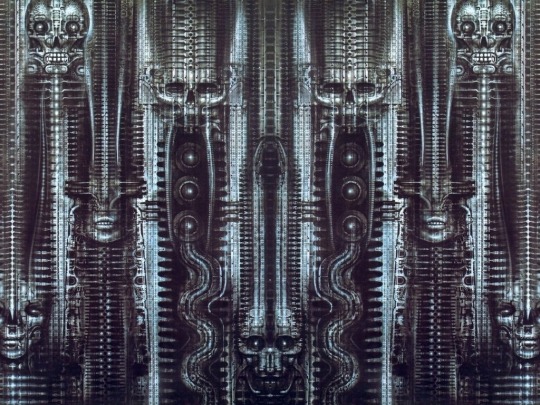
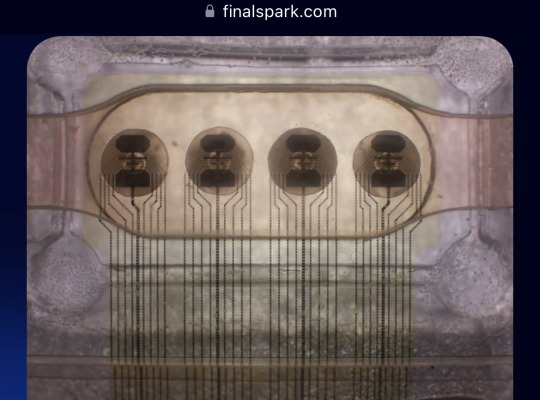
Are these guys serious?
Final Spark?
Imagine a future where the boundaries between biology and technology dissolve, and the power of intelligence and computing transcends traditional silicon-based devices. Welcome to the next evolutionary leap – the era of biocomputing
Can’t think of anything that might be an issue there, luckily
Just re-reading Murderbot:
When constructs were first developed, they were originally supposed to have a pre-sentient level of intelligence, like the dumber variety of bot. But you can’t put something as dumb as a hauler bot in charge of security for anything without spending even more money for expensive company-employed human supervisors. So they made us smarter.
The anxiety and depression were side effects.
In the deployment center, when I was standing there while Dr. Mensah explained why she didn’t want to rent me as part of the bond guarantee agreement, she had called the increase in intelligence a
“hellish compromise”

#murderbot#the murderbot diaries#murderbot diaries#biocomputing#human neural tissue#tmbd#mbd#science#artifical intelligence
8 notes
·
View notes
Text
Creating an Innovation Storm from Mini-Brains in a Teacup: The Simplified Science of Organoids
A simplified version of my conceptual and intuitive exploration of the mysteries behind organoid intelligence for a potential discovery merging artificial intelligence with biocomputing. Combinatorial Innovation in Science and Technology I have been fascinated by various kinds of intelligence for combinatorial innovation, exploring ideas on how the human brain works—how it learns, remembers,…
#artificial intelligence in medicine#Biocomputing#Brain Organoids#Cognitive Computing#Cognitive science research#Future of Biotechnology#neural networks#Neurocomputing#Neuroscience Research#Organoid Intelligence#Reservoir Computing#Stem Cell Research#Tiny Brains in a Cup
1 note
·
View note
Text
MIT named No. 2 university by U.S. News for 2024-25
New Post has been published on https://thedigitalinsider.com/mit-named-no-2-university-by-u-s-news-for-2024-25/
MIT named No. 2 university by U.S. News for 2024-25
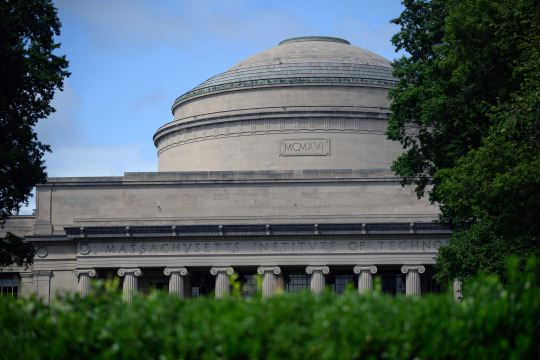

MIT has placed second in U.S. News and World Report’s annual rankings of the nation’s best colleges and universities, announced today.
As in past years, MIT’s engineering program continues to lead the list of undergraduate engineering programs at a doctoral institution. The Institute also placed first in six out of nine engineering disciplines.
U.S. News placed MIT second in its evaluation of undergraduate computer science programs, along with Carnegie Mellon University and the University of California at Berkeley. The Institute placed first in four out of 10 computer science disciplines.
MIT remains the No. 2 undergraduate business program, a ranking it shares with UC Berkeley. Among business subfields, MIT is ranked first in three out of 10 specialties.
Within the magazine’s rankings of “academic programs to look for,” MIT topped the list in the category of undergraduate research and creative projects. The Institute also ranks as the third most innovative national university and the third best value, according to the U.S. News peer assessment survey of top academics.
MIT placed first in six engineering specialties: aerospace/aeronautical/astronautical engineering; chemical engineering; computer engineering; electrical/electronic/communication engineering; materials engineering; and mechanical engineering. It placed within the top five in two other engineering areas: biomedical engineering and civil engineering.
Other schools in the top five overall for undergraduate engineering programs are Stanford University, UC Berkeley, Georgia Tech, Caltech, the University of Illinois at Urbana-Champaign, and the University of Michigan at Ann Arbor.
In computer science, MIT placed first in four specialties: biocomputing/bioinformatics/biotechnology; computer systems; programming languages; and theory. It placed in the top five of five other disciplines: artificial intelligence; cybersecurity; data analytics/science; mobile/web applications; and software engineering.
The No. 1-ranked undergraduate computer science program overall is at Stanford. Other schools in the top five overall for undergraduate computer science programs are Carnegie Mellon, Stanford, UC Berkeley, Princeton University, and the University of Illinois at Urbana-Champaign.
Among undergraduate business specialties, the MIT Sloan School of Management leads in analytics; production/operations management; and quantitative analysis. It also placed within the top five in three other categories: entrepreneurship; management information systems; and supply chain management/logistics.
The No. 1-ranked undergraduate business program overall is at the University of Pennsylvania; other schools ranking in the top five include UC Berkeley, the University of Michigan at Ann Arbor, and New York University.
#2024#aerospace#Analysis#Analytics#applications#artificial#Artificial Intelligence#assessment#Biocomputing#Biomedical engineering#biotechnology#Business#Business and management#california#caltech#Carnegie Mellon University#chemical#Chemical engineering#civil engineering#colleges#communication#computer#Computer Science#Computer science and technology#creative projects#cybersecurity#data#data analytics#Education#teaching
0 notes
Text
e470 — Two Marvelous Mini-Brains
AI threads through a set of old and new games that span text based adventures from Infocom’s HHG2G to recent examples like Milton is Trapped, along with a conversation on FinalSpark’s Neuroplatform for biocomputing.
Photo by Michael Rowe Published 1 July 2024 Andy and Michael M get together to talk through the backlog of articles and stories from the past weeks. While Michael R is away this time, in this episode Andy and Michael M pull on an AI thread exposed through a set of old and new games, discuss FinalSpark’s Neuroplatform for biocomputing and marvel at the immense immersiveness of the Calculating…
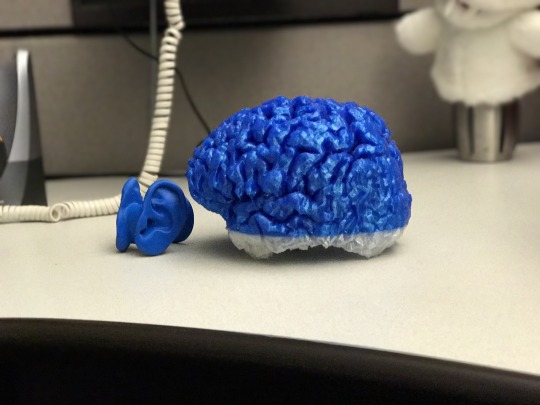
View On WordPress
#ai#banana#Barbecue Camp#biocomputing#brain#cow clicker#Egg#FinalSpark#Infocom#Milton#neuroplatform#steam#TRS-80#wetware computing#WWDC24
0 notes
Text
with the creation of biocomputers the lines between organic and mechanical are blurring. they've been blurred for some time with subtle additions of the mechanical to the biological. now we're using parts of ourselves to better them just like how we used them to better us.
0 notes
Text
Swiss Startup Connects 16 Human Mini-Brains to Create Low Energy 'Biocomputer' | ScienceAlert.com
The bioprocessor with eight electrodes attached to four arrays each housing a cluster of brain cells. (Jordan et al., Frontiers in Artificial Intelligence, 2024) The future of AI? Source: Swiss Startup Connects 16 Human Mini-Brains to Create Low Energy ��Biocomputer’ This just found me. Swiss Company FinalSpark just released a research platform based on organoid computing circuits that enable…

View On WordPress
#AI#AIDevelopment#biocomputing#EN#FinalSpark#informationprocessing#organoidinformationprocessing#organoids#powerconsumption
0 notes
Text
Living brain-cell biocomputers are now training on dopamine
As if AI wasn't freaky enough...
0 notes
Text
Unveiling the Potential: Wetware Computers Market Explodes with Innovation
In the realm of technological innovation, where the boundaries between science fiction and reality blur, wetware computers emerge as a fascinating frontier. Unlike traditional hardware, wetware computers are not built from silicon and metal but are instead composed of living biological material, such as neurons or DNA. This revolutionary approach to computing holds immense promise, igniting a surge of interest and investment in the Wetware Computers Market.
The concept of wetware computing draws inspiration from the most powerful computing system known to humanity: the human brain. Mimicking the brain's structure and functionality, wetware computers leverage biological components to perform complex computations with unparalleled efficiency and adaptability. This paradigm shift in computing heralds a new era of neuromorphic computing, where machines can learn, reason, and evolve in ways reminiscent of the human mind.
One of the most compelling applications of wetware computers lies in the realm of artificial intelligence (AI). Traditional AI systems often struggle with tasks that humans excel at, such as natural language processing and pattern recognition. Wetware computers, with their biological substrate, offer a more intuitive and seamless approach to AI, enabling machines to comprehend and interact with the world in a manner akin to human cognition.
Biocomputing, a subset of wetware computing, explores the integration of biological components, such as DNA molecules, into computational systems. DNA, with its remarkable data storage capacity and self-replicating nature, presents a tantalizing opportunity for developing ultra-compact and energy-efficient computing devices. Researchers envision DNA-based computers capable of solving complex problems in fields ranging from healthcare to environmental monitoring.
Another exciting avenue in the wetware computers market is the advancement of brain-computer interfaces (BCIs). BCIs establish direct communication pathways between the human brain and external devices, enabling individuals to control computers, prosthetics, or even smart appliances using their thoughts alone. With wetware-based BCIs, the potential for seamless integration and enhanced performance skyrockets, paving the way for transformative applications in healthcare, accessibility, and human augmentation.
The wetware computers market is not without its challenges and ethical considerations. As with any emerging technology, questions regarding safety, reliability, and privacy abound. Ensuring the ethical use of wetware technologies, safeguarding against potential misuse or unintended consequences, requires robust regulatory frameworks and interdisciplinary collaboration between scientists, ethicists, and policymakers.
Despite these challenges, the wetware computers market is poised for exponential growth and innovation. Companies and research institutions worldwide are investing heavily in R&D efforts to unlock the full potential of biological computing. From startups pushing the boundaries of biocomputing to established tech giants exploring neuromorphic architectures, the landscape is abuzz with creativity and ambition.
In addition to AI, biocomputing, and BCIs, wetware computers hold promise across diverse domains, including robotics, drug discovery, and environmental monitoring. Imagine robots endowed with biological brains, capable of learning and adapting to dynamic environments with human-like agility. Picture a future where personalized medicine is powered by DNA-based computing, revolutionizing healthcare delivery and treatment outcomes.
As the wetware computers market continues to evolve, collaborations between academia, industry, and government will be instrumental in driving innovation and addressing societal concerns. Interdisciplinary research initiatives, funding support for cutting-edge projects, and public engagement efforts are essential for navigating the complexities of this transformative technology landscape.
In conclusion, the rise of wetware computers represents a paradigm shift in computing, with profound implications for AI, biotechnology, and human-machine interaction. By harnessing the power of living biological material, we embark on a journey towards smarter, more adaptable, and ethically conscious computing systems. As we tread this uncharted territory, let us embrace the challenges and opportunities that lie ahead, shaping a future where wetware computers empower us to realize the full extent of our technological imagination.
#Wetware Computers#Neuromorphic Computing#Biocomputing#Neural Networks#Artificial Intelligence#Brain-Computer Interfaces#Emerging Technologies
0 notes
Text
The presentations and discussion in this session build on the previously posted Frontiers in Science article ‘Organoid intelligence (OI): the new frontier in biocomputing and intelligence-in-a-dish’.
0 notes
Text
Aurra Sing Watches the Racers Pass
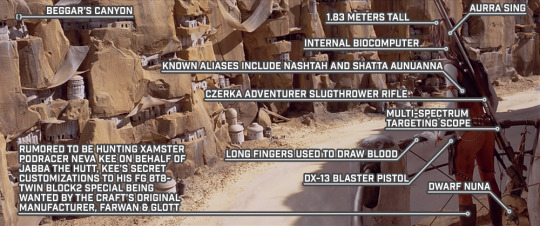
STAR WARS EPISODE I: The Phantom Menace 01:01:11
#Star Wars#Episode I#The Phantom Menace#Tatooine#Boonta Eve Classic#podrace#Beggar's Canyon#Aurra Sing#internal biocomputer#Nashtah#Shatta Aunuanna#Czerka Adventurer slugthrower rifle#multi-spectrum targeting scope#DX-13 blaster pistol#dwarf nuna#Xamster#Neva Kee#FG 8T8-Twin Block2 Special#Farwan & Glott
20 notes
·
View notes
Text
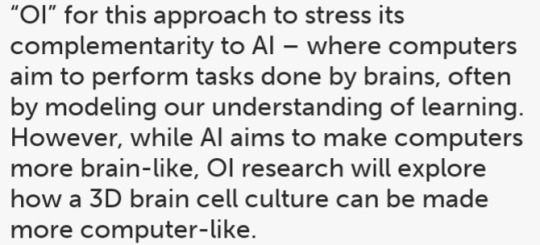
someone explain why that last sentence absolutely broke me
#“AI aims to make computers more brain-like while OI aims to make brain cell cultures more computer-like” 🥹🥹#i am SOBBING#biocomputing biophysics and neuroscience have my whole heart#organoids are my new fav thing after monoclonal antibodies btw#random but an OI takeover sounds way scarier than an AI takeover bc firstly the organoids would have to become sentient (TERRIFYING)#secondly they would have to become more intelligent than humans (MORE TERRIFYING)#reason why it's so much scarier is we would have essentially created lifeforms that are superior to us#and there is literally nothing we can do about it#AI? put the electricity off or pour acid on them#OI? say your prayers#i would go on but this is tags not a post#shitpost?#shitpost#idk#random#😼
6 notes
·
View notes
Text
i don't like the scientists giving the homunculi mental illnesses.. it makes me feel less special :(((
#thats what i have#i dont wanna share :(#and the moral implications or whatever#biocomputers#homunculi
2 notes
·
View notes
Text
Living Cellular Computers: A New Frontier in AI and Computation Beyond Silicon
New Post has been published on https://thedigitalinsider.com/living-cellular-computers-a-new-frontier-in-ai-and-computation-beyond-silicon/
Living Cellular Computers: A New Frontier in AI and Computation Beyond Silicon
Biological systems have fascinated computer scientists for decades with their remarkable ability to process complex information, adapt, learn, and make sophisticated decisions in real time. These natural systems have inspired the development of powerful models like neural networks and evolutionary algorithms, which have transformed fields such as medicine, finance, artificial intelligence and robotics. However, despite these impressive advancements, replicating the efficiency, scalability, and robustness of biological systems on silicon-based machines remains a significant challenge.
But what if, instead of merely imitating these natural systems, we could use their power directly? Imagine a computing system where living cells — the building block of biological systems — are programmed to perform complex computations, from Boolean logic to distributed computations. This concept has led to a new era of computation: cellular computers. Researchers are investigating how we can program living cells to handle complex calculations. By employing the natural capabilities of biological cells, we may overcome some of the limitations of traditional computing. This article explores the emerging paradigm of cellular computers, examining their potential for artificial intelligence, and the challenges they present.
The Genesis of Living Cellular Computers
The concept of living cellular computers is rooted in the interdisciplinary field of synthetic biology, which combines principles from biology, engineering, and computer science. At its core, this innovative approach uses the inherent capabilities of living cells to perform computational tasks. Unlike traditional computers that rely on silicon chips and binary code, living cellular computers utilize biochemical processes within cells to process information.
One of the pioneering efforts in this domain is the genetic engineering of bacteria. By manipulating the genetic circuits within these microorganisms, scientists can program them to execute specific computational functions. For instance, researchers have successfully engineered bacteria to solve complex mathematical problems, such as the Hamiltonian path problem, by exploiting their natural behaviors and interactions.
Decoding Components of Living Cellular Computers
To understand the potential of cellular computers, it’s useful to explore the core principles that make them work. Imagine DNA as the software of this biological computing system. Just like traditional computers use binary code, cellular computers utilize the genetic code found in DNA. By modifying this genetic code, scientists can instruct cells to perform specific tasks. Proteins, in this analogy, serve as the hardware. They are engineered to respond to various inputs and produce outputs, much like the components of a traditional computer. The complex web of cellular signaling pathways acts as the information processing system, allowing for massively parallel computations within the cell. Additionally, unlike silicon-based computers that need external power sources, cellular computers use the cell’s own metabolic processes to generate energy. This combination of DNA programming, protein functionality, signaling pathways, and self-sustained energy creates a unique computing system that leverages the natural abilities of living cells.
How Living Cellular Computers Work
To understand how living cellular computers work, it’s helpful to think of them like a special kind of computer, where DNA is the “tape” that holds information. Instead of using silicon chips like regular computers, these systems use the natural processes in cells to perform tasks.
In this analogy, DNA has four “symbols”—A, C, G, and T—that store instructions. Enzymes, which are like tiny machines in the cell, read and modify this DNA just as a computer reads and writes data. But unlike regular computers, these enzymes can move freely within the cell, doing their work and then reattaching to the DNA to continue.
For example, one enzyme, called a polymerase, reads DNA and makes RNA, a kind of temporary copy of the instructions. Another enzyme, helicase, helps to copy the DNA itself. Special proteins called transcription factors can turn genes on or off, acting like switches.
What makes living cellular computers exciting is that we can program them. We can change the DNA “tape” and control how these enzymes behave, allowing for complex tasks that regular computers can’t easily do.
Advantages of Living Cellular Computers
Living cellular computers offer several compelling advantages over traditional silicon-based systems. They excel at massive parallel processing, meaning they can handle multiple computations simultaneously. This capability has the potential to greatly enhance both speed and efficiency of the computations. Additionally, biological systems are naturally energy-efficient, operating with minimal energy compared to silicon-based machines, which could make cellular computing more sustainable.
Another key benefit is the self-replication and repair abilities of living cells. This feature could lead to computer systems that are capable of self-healing, a significant leap from current technology. Cellular computers also have a high degree of adaptability, allowing them to adjust to changing environments and inputs with ease—something traditional systems struggle with. Finally, their compatibility with biological systems makes them particularly well-suited for applications in fields like medicine and environmental sensing, where a natural interface is beneficial.
The Potential of Living Cellular Computers for Artificial Intelligence
Living cellular computers hold intriguing potential for overcoming some of the major hurdles faced by today’s artificial intelligence (AI) systems. Although the current AI relies on biologically inspired neural networks, executing these models on silicon-based hardware presents challenges. Silicon processors, designed for centralized tasks, are less effective at parallel processing—a problem partially addressed by using multiple computational units like graphic processing units (GPUs). Training neural networks on large datasets is also resource-intensive, driving up costs and increasing the environmental impact due to high energy consumption.
In contrast, living cellular computers excel in parallel processing, making them potentially more efficient for complex tasks, with the promise of faster and more scalable solutions. They also use energy more efficiently than traditional systems, which could make them a greener alternative.
Additionally, the self-repair and replication abilities of living cells could lead to more resilient AI systems, capable of self-healing and adapting with minimal intervention. This adaptability might enhance AI’s performance in dynamic environments.
Recognizing these advantages, researchers are trying to implement perceptron and neural networks using cellular computers. While there’s been progress with theoretical models, practical applications are still in the works.
Challenges and Ethical Considerations
While the potential of living cellular computers is immense, several challenges and ethical considerations must be addressed. One of the primary technical challenges is the complexity of designing and controlling genetic circuits. Unlike traditional computer programs, which can be precisely coded and debugged, genetic circuits operate within the dynamic and often unpredictable environment of living cells. Ensuring the reliability and stability of these circuits is a significant hurdle that researchers must overcome.
Another critical challenge is the scalability of cellular computation. While proof-of-concept experiments have demonstrated the feasibility of living cellular computers, scaling up these systems for practical applications remains a daunting task. Researchers must develop robust methods for mass-producing and maintaining engineered cells, as well as integrating them with existing technologies.
Ethical considerations also play a crucial role in the development and deployment of living cellular computers. The manipulation of genetic material raises concerns about unintended consequences and potential risks to human health and the environment. It is essential to establish stringent regulatory frameworks and ethical guidelines to ensure the safe and responsible use of this technology.
The Bottom Line
Living cellular computers are setting the stage for a new era in computation, employing the natural abilities of biological cells to tackle tasks that silicon-based systems handle today. By using DNA as the basis for programming and proteins as the functional components, these systems promise remarkable benefits in terms of parallel processing, energy efficiency, and adaptability. They could offer significant improvements for AI, enhancing speed and scalability while reducing power consumption. Despite the potential, there are still hurdles to overcome, such as designing reliable genetic circuits, scaling up for practical use, and addressing ethical concerns related to genetic manipulation. As this field evolves, finding solutions to these challenges will be key to unlocking the true potential of cellular computing.
#ai#AI systems#Algorithms#applications#approach#Article#artificial#Artificial Intelligence#Bacteria#binary#Biochemical Processing in AI#Biocomputation#Biocomputers#Biocomputing#Biological Computing Systems#Biology#Building#cell#Cells#Cellular Computers#Cellular Computing for AI#challenge#change#chips#code#complexity#computation#computer#Computer Science#computers
0 notes
Text
Australian startup Cortical Labs unveils 'world’s first' commercial biological computer
Biological computing startup Cortical Labs has launched CL1, what it is calling the world’s first commercial biological computer. The technology combines “lab-cultivated neurons from human stem cells” with silicon to create what the company says is a “more advanced and sustainable form of AI,” a neural network dubbed Synthetic Biological Intelligence (SBI). According to Australia-based Cortical…
0 notes
Text
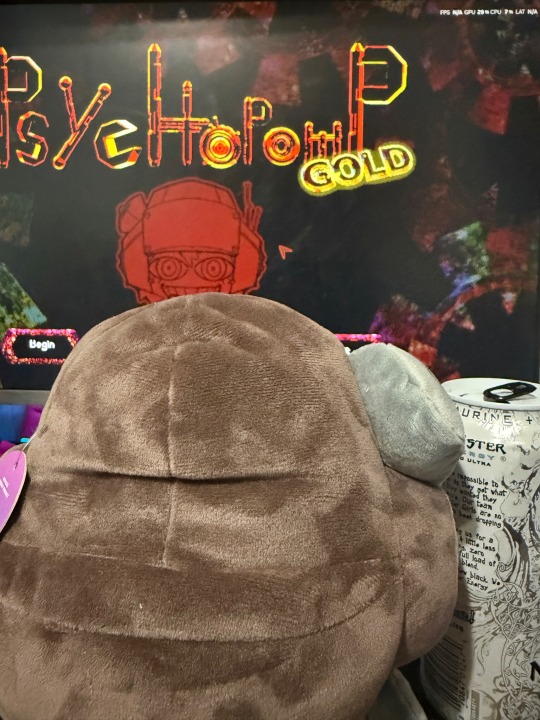
On da computah seeking the truth.
#pyschopomp#did you know that All food you have ever eaten is rotten. You have never tasted fresh food.#they deserve it.Dawnoboo#Or that There is at least one biocomputer mainframe storedin every public government building.#have you at least tried asking what your father's true name is? You might be surprised!
1 note
·
View note